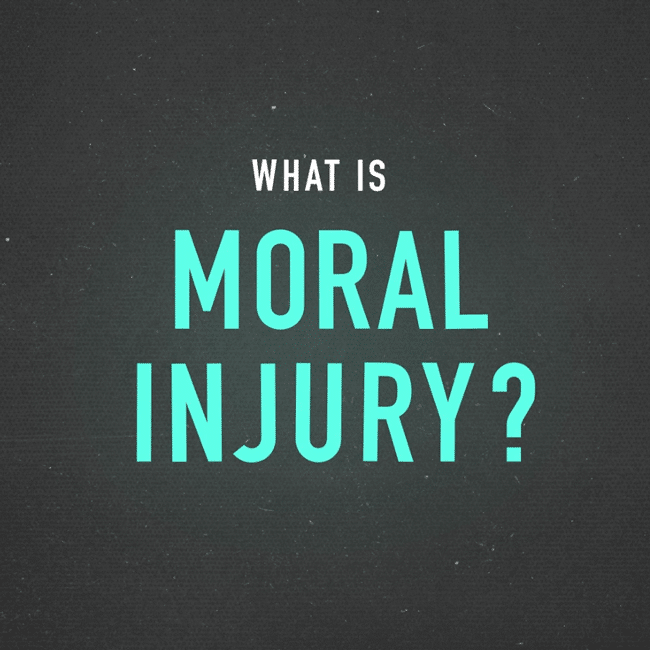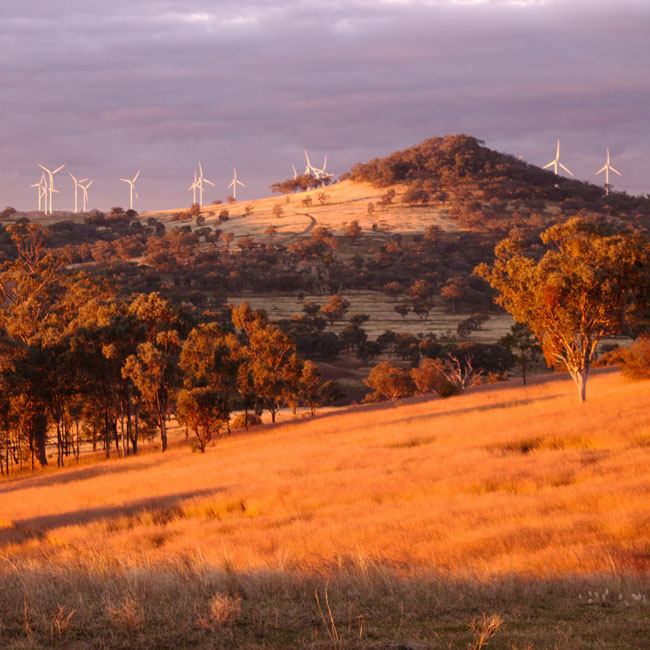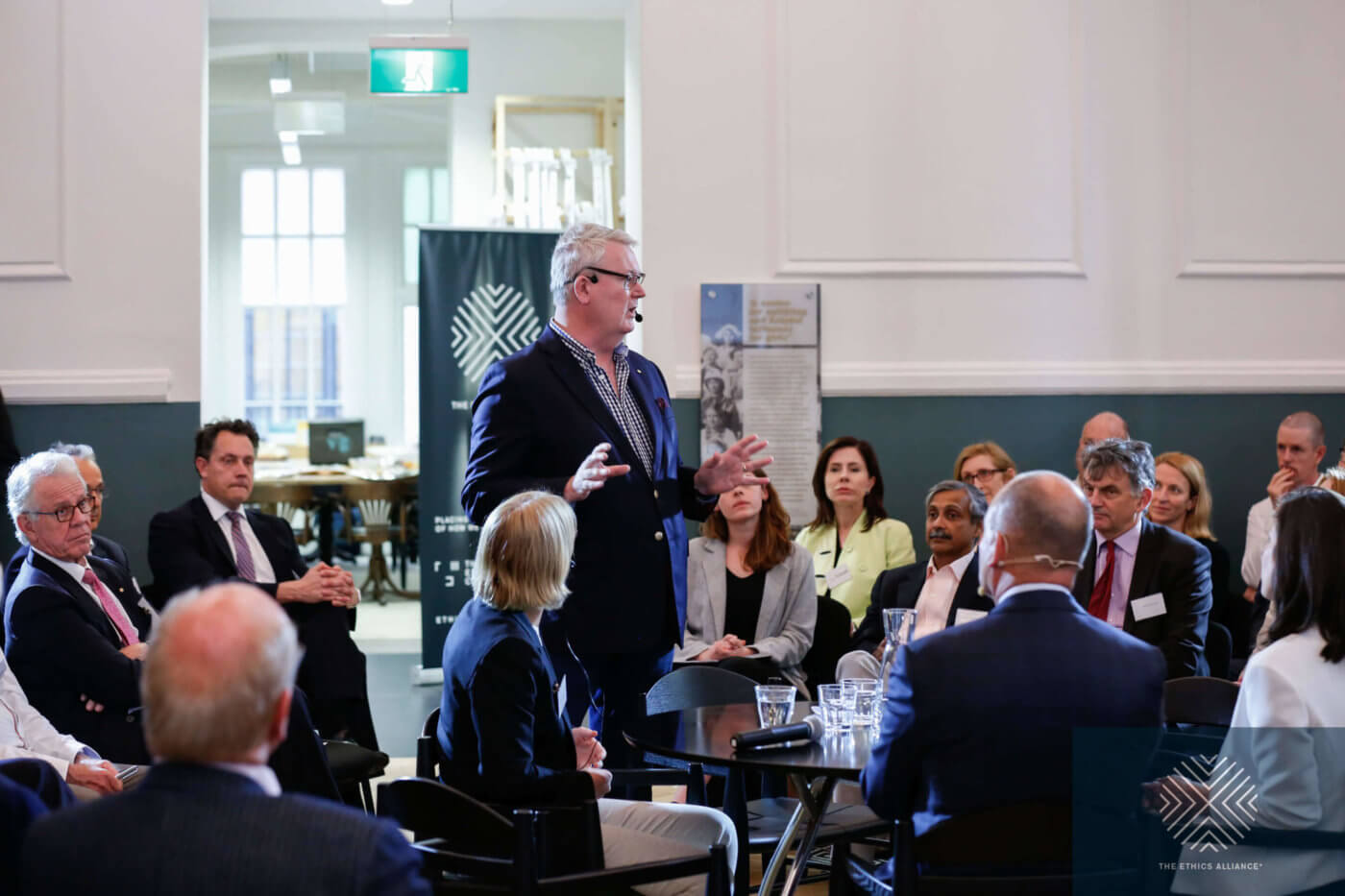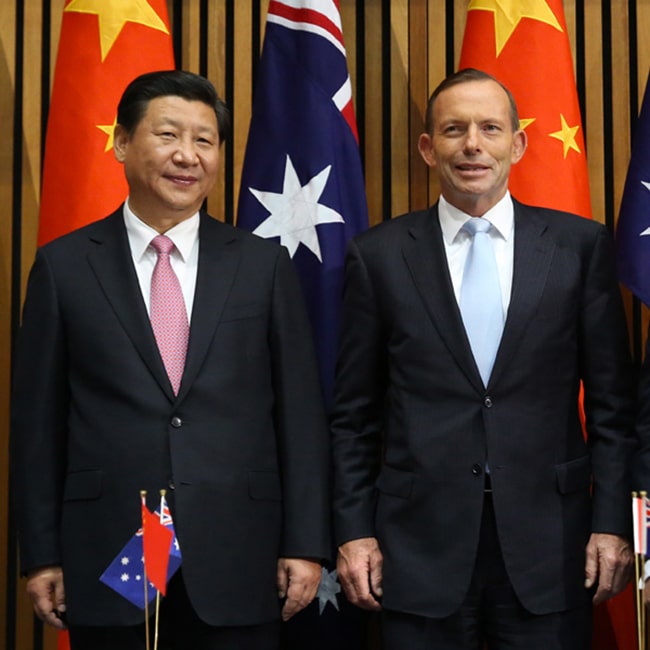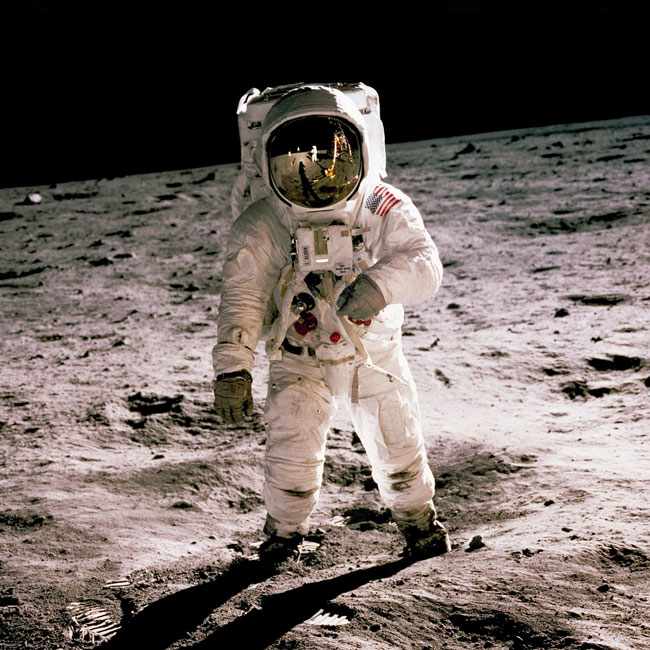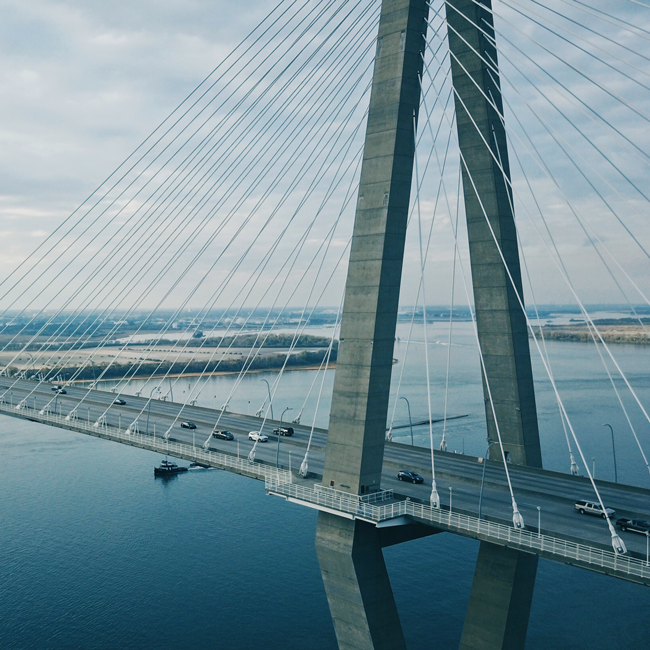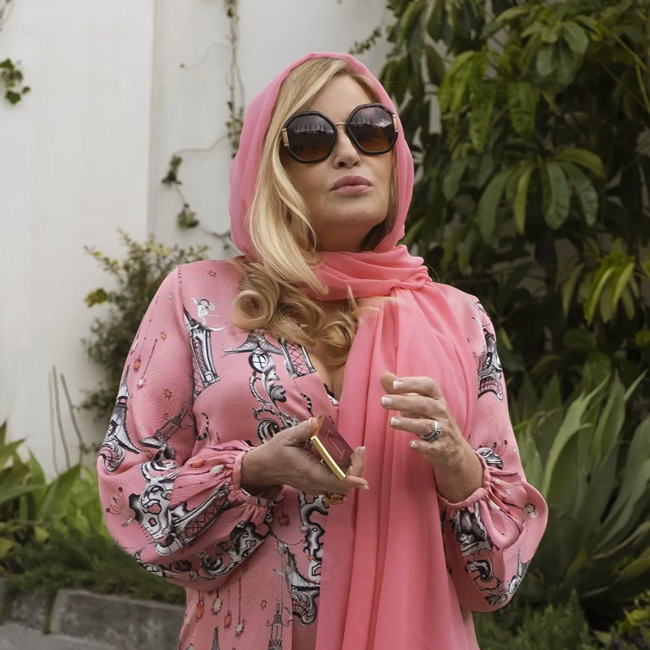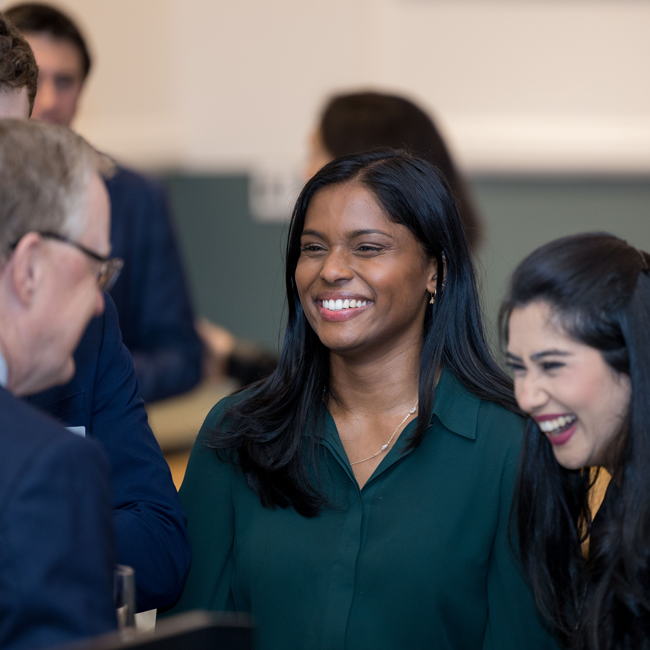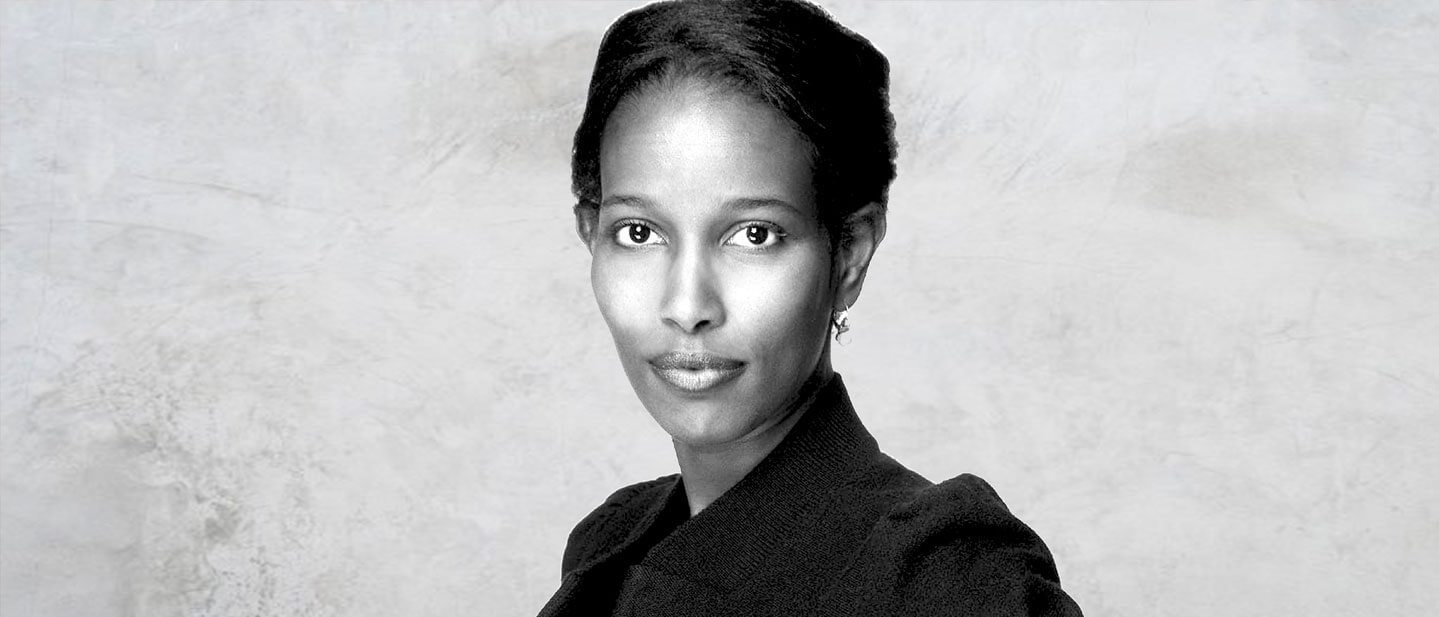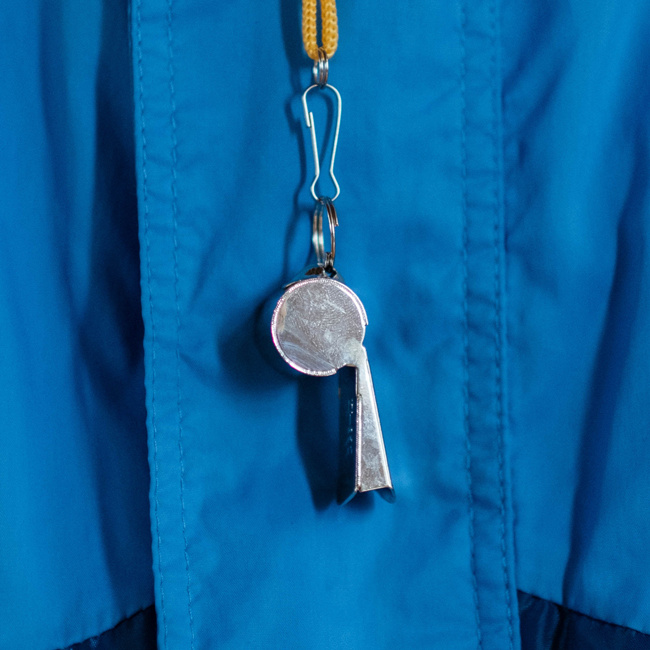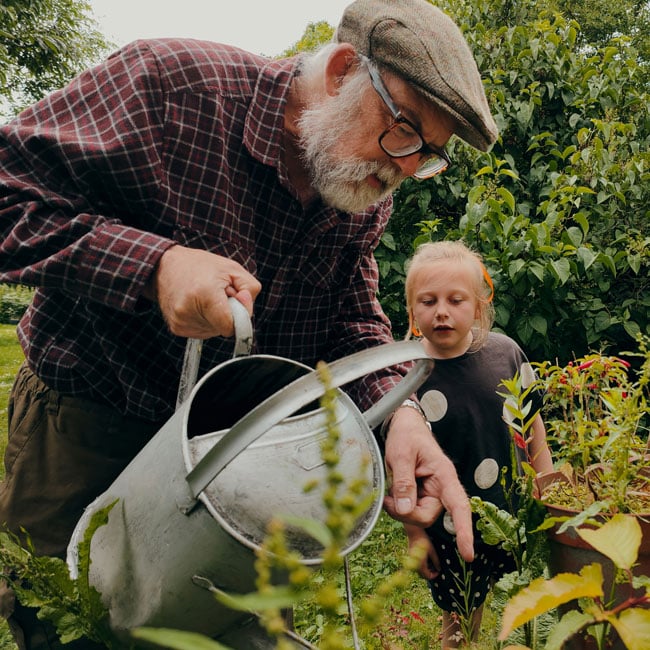Moral injury
Each of us believes that, at our core, we are fundamentally ethical people. We always try to do the right thing. We have deeply held values and principles that we are not willing to compromise.
But sometimes we are thrust into situations where there appears to be no ‘right answer’ – where the best we can hope for is to take the ‘least bad’ option or, worse still, where we are forced to act against what we believe is right.
Moral injury is caused when we are compelled to act against what we believe is right in a high stakes situation.

Ethics in your inbox.
Get the latest inspiration, intelligence, events & more.
By signing up you agree to our privacy policy
You might be interested in…
Opinion + Analysis
Health + Wellbeing, Politics + Human Rights, Relationships
People with dementia need to be heard – not bound and drugged
Opinion + Analysis
Business + Leadership
Give them a piggy bank: Why every child should learn to navigate money with ethics
Opinion + Analysis
Health + Wellbeing, Relationships
Eight questions to consider about schooling and COVID-19
Opinion + Analysis
Business + Leadership
John Elkington on business sustainability and ethics
BY The Ethics Centre
The Ethics Centre is a not-for-profit organisation developing innovative programs, services and experiences, designed to bring ethics to the centre of professional and personal life.
Who are corporations willing to sacrifice in order to retain their reputation?

Who are corporations willing to sacrifice in order to retain their reputation?
Opinion + AnalysisBusiness + Leadership
BY Nina Hendy 23 OCT 2023
In an era where mud sticks like glue, corporate tolerance has waned to such a degree that the need to keep hard-fought reputations is outweighing respect for human fallibility.
Careers and hard-won professional reputations built over many decades can come tumbling down overnight after off-the cuff-comments or even private messages sent to a colleague are made public, overshadowing years of hard work.
And the corporations they work for often seek to condemn, seek a resignation and shuffle talent out the door than chalk it up as an error of judgment, forgive and move on.
Tasmanian Attorney-General Elise Archer was forced to resign after one leaked message to the media appeared to be an exasperated reference to victim-survivors of child sexual abuse. Archer was not given the opportunity to challenge the claims made against her and is adamant that the messages were taken out of context.
Another study found 312 news articles about people who had been fired due to a social media post. These included teachers fired after coming out as bisexual on Instagram, and a retail employee let go over a racist post on Facebook.
While racism was the most common reason workers were fired in these news stories, other forms of discriminatory behaviour included posts about workplace conflict, bad jokes, insensitive posts, acts of violence and even political content. Of course, there’s no doubt of dozens more cases that aren’t even made public.
Are companies too quick to condemn?
The blurred lines between knowingly behaving unethically at work and comments shared without our permission raises the question of whether corporations are too quick to condemn indiscretions in favour of their reputation. While public trust in elected officials is critical, it’s also important to remember that these officials are also human beings.
As workplaces are prioritising accountability and ethical standards to ensure safe and productive environments, too often we are seeing errors of judgement costing hard-working professionals their reputation, not to mention their future earning potential after they are ousted from their job.
It begs the question: What ever happened to an individuals’ right to make a mistake and for the rest of society not to leave them out in the cold forever? Have we come to a point where our inner thoughts and feelings shared in private are indicative of our ability to do our job?
Where we draw the line
Despite private messages being made public costing people their jobs and reputations, career coach Renata Bernarde believes that private messages should remain private and usually aren’t a true reflection of our ability to do our job.
“When leaked, we can see that private messages can offer glimpses into someone’s personal thoughts and feelings, which might be expressed without the filter they would use in a professional setting. That said, if private messages reveal behaviours or beliefs that directly contradict the values and responsibilities of their public role, it’s a valid concern. For instance, a diversity and inclusion leader advocating for equality should not have private messages showcasing prejudice.”
However, Bernarde urges corporations to avoid blanket penalties, saying we need to be cautious about using isolated messages out of context to vilify individuals. “It’s essential to consider the entirety of the person’s character and contributions,” she says.
The art of corporate forgiveness
There are occasional cases of corporate forgiveness. Western Australian man Cameron Waugh was charged with six counts of insider trading and was released on bail. He has since appointed the interim CEO of a company that’s obviously deemed his skills more valuable.
While forgiveness and the opportunity to secure a new job after misconduct is complex and multifaceted, human resources and emotional resilience expert Shane Warren says that it’s important that workplaces acknowledge that making a mistake pertains to the psychological and emotional harm caused by actions that violate one’s deeply held moral beliefs.
“Any doctrine of faith reminds us that human fallibility is an inherent part of our nature, and the capacity to make mistakes is universal. The idea that an individual who has ‘stuffed up’ should not be punished indefinitely for errors resonates with our core principles of fairness and modern desire to embrace personal growth.”
However, Warren admits that balancing the need for accountability with the recognition of our humanity can be challenging. Nevertheless, fostering a culture of learning, growth and restorative justice can help strike a more equitable balance between accountability and compassion in any workplace, he says.
The process of forgiveness and reintegration into the workforce should ideally involve steps such as acknowledging wrongdoing, seeking rehabilitation or counselling, demonstrating genuine remorse and showing a sustained commitment to personal growth and ethical behaviour. The timing for a new job may vary depending on individual circumstances and the severity of the misconduct, he says.
“Perhaps instead, society needs to bear in mind that everyone is fallible. If indiscretions or mistakes happen, when addressed and an apology is allowed to be given, it can lead to greater resilience, better understanding and personal and professional development.”
Ethics in your inbox.
Get the latest inspiration, intelligence, events & more.
By signing up you agree to our privacy policy
You might be interested in…
Opinion + Analysis
Climate + Environment, Business + Leadership
We’re in this together: The ethics of cooperation in climate action and rural industry
Opinion + Analysis
Business + Leadership
Doing good for the right reasons: AMP Capital’s ethical foundations
Opinion + Analysis
Business + Leadership
Productivity isn’t working, so why not try being more ethical?
Opinion + Analysis
Business + Leadership
The Ethics Alliance: Why now?
BY Nina Hendy
Nina Hendy is an Australian business & finance journalist writing for The Financial Review, The Sydney Morning Herald, The Age and The New Daily.
Big Thinker: Karl Marx

Karl Marx (1818-1883) was a philosopher, economist, and revolutionary thinker whose criticisms of capitalism and breakdowns of class struggle continue to influence contemporary thought about economic inequality and the worth of individual labour.
He was not only a prominent figure in the world of philosophy but also a key player in economic and political theory. Marx’s life and work were deeply intertwined with the tumultuous historical backdrop of the 19th century, marked by the Industrial Revolution and the rise of capitalism.
Born in Trier, Prussia (now in Germany), Marx began with a focus on law and philosophy at the University of Bonn and later at the University of Berlin. During his time in Berlin, he encountered the ideas of G.W.F. Hegel, whose methods significantly influenced Marx’s own philosophical approach.
In collaboration with Friedrich Engels, Marx developed and refined his ideas, culminating in some of the most influential works in the history of political philosophy. For example, his infamous The Communist Manifesto (1848) and Das Kapital (1867, 1885, 1894).
Historical materialism and class struggle
One of Marx’s central ideas was historical materialism, a theory that analyses the evolution of societies through the lens of economic systems. According to Marx, the structure of a society is primarily determined by its mode of production: the ways commodities and services are produced and distributed, and the social relations that affect these functions. In capitalist societies, the means of production are privately owned, leading to a class-based social structure separating the owners and the workers.
Marx’s analysis of class struggle underscores the ethical imperative of addressing economic inequality. He argued that under capitalism, the bourgeoisie (owners of the means of production) exploit the proletariat (the working class) for their own profit. This exploitation, he claims, is the engine that drives the capitalist system, where workers are paid less than the value of their labour while the bourgeoisie reap the profits. This exploitation also results in alienation, where workers are estranged from the full effects of their labour and, Marx argues, even from their own humanity.
Marx’s arguments call for a reevaluation of the inherent fairness of such a system. He questions the morality of a society where wealth and power are concentrated in the hands of a few while the masses toil in poverty. This is an ethical challenge that continues to resonate in contemporary discussions about income inequality and social justice.
Marx’s critique challenges us to consider whether a society that values profit and efficiency over the well-being and fulfillment of its members is ethically justifiable.
To address this concern, Marx envisioned a classless society, where the means of production would be collectively owned. This transition, he believed, would eliminate the inherent exploitation of capitalism and lead to a more just and equitable society. While the practical realisation of this vision has proven challenging, it remains a foundational ethical ideal for some, emphasising the need to confront economic disparities for the sake of human dignity and fairness.
Critique of capitalism and commodification
Marx’s critique of capitalism extended beyond its class divisions. He also examined the profound impact of capitalism on human relationships and the commodification of virtually everything, including labour, under this system. For Marx, capitalism reduced individuals to mere commodities, bought and sold in the labour market.
Marx’s critique of commodification highlights the importance of valuing individuals beyond their economic contributions. He argued that in a capitalist society, individuals are often reduced to their economic worth, which can erode their sense of self-worth and dignity. Addressing this ethical concern calls for recognising the intrinsic value of every person and fostering functions in societies that prioritise human well-being over profit.
The communist vision
Marx’s ultimate vision was communism, a classless society where resources would be shared collectively. In such a society, the state as we know it would wither away, and individuals would contribute to the common good according to their abilities and receive according to their needs.
This communist vision raises questions about the ethics of property and ownership. It challenges us to rethink the distribution of resources in society and consider alternative models that prioritise equity and communal well-being. While achieving a truly communist society might be complex or even out of reach, the aspiration of creating a world where everyone’s needs are met and individuals contribute to the best of their abilities is still a general ethical ideal many people intuitively strive for.
Despite this, Marx’s ideas have faced much criticism. Many believe that a classless society with a centralised power risks authoritarianism, Marx’s economic planning lacked detail, communism goes against human nature of self-interest and competition, and historical and contemporary communist systems face large practical challenges.
In spite of, and sometimes because of, these challenges, Marx’s ideas continue to spark ethical discussions about economic inequality, commodification, and the nature of human relationships in contemporary society. His legacy serves as a reminder of the enduring importance of grappling with questions of justice, equality, and human dignity in our ever-evolving social and economic landscapes.
Ethics in your inbox.
Get the latest inspiration, intelligence, events & more.
By signing up you agree to our privacy policy
You might be interested in…
Explainer
Business + Leadership, Politics + Human Rights
Ethics Explainer: Universal Basic Income
Opinion + Analysis
Business + Leadership
Is it fair to expect Australian banks to reimburse us if we’ve been scammed?
Reports
Business + Leadership
Productivity and Ethics
Opinion + Analysis
Business + Leadership, Politics + Human Rights
Character and conflict: should Tony Abbott be advising the UK on trade? We asked some ethicists
BY The Ethics Centre
The Ethics Centre is a not-for-profit organisation developing innovative programs, services and experiences, designed to bring ethics to the centre of professional and personal life.
Do Australian corporations have the courage to rebuild public trust?

Do Australian corporations have the courage to rebuild public trust?
Opinion + AnalysisBusiness + Leadership
BY Carl Rhodes 27 SEP 2023
Corporate Australia is having a rough time in 2023.
PwC made headlines for selling out Australian citizens by flogging details of the government’s tax avoidance schemes to potential corporate tax avoiders. Qantas has been raked over the coals for, amongst other things, lying to customers and illegally sacking workers. Elsewhere corporations are pilloried for scandalously excessive executive pay, Dickensian industrial relations standards, wilfully aggressive tax avoidance, and heartless profiteering.
Research by the market researchers at Roy Morgan recently revealed that the level of trust Australians have in corporations is at the lowest it has ever been since they started measuring it. The downward trend started with COVID but has been in free fall since the middle of 2022. Roy Morgan CEO Michelle Levine describes what is going on as the result of ‘moral blindness’ of corporations.
There is an apparent irony in play. Today’s corporations are accused of this moral blindness, while many publicly embrace ethics by taking increasingly active roles in important matters of public purpose and social impact. Corporations are weighing in on a variety of crucial political issues, such as the Indigenous Voice to Parliament, LGBTQIA+ rights, and the climate crisis.
Business as a force for good?
In the era of ‘woke capitalism’ the business world seems to feel little cognitive dissonance, let alone hypocrisy, about parading their ethical credentials in public while acting like ruthless and exploitative profiteers in the market. Being economically exploitative and socially progressive is the name of the game for many corporations.
The socially progressive position regards businesses as having the potential to be a ‘force for good’, especially by adopting progressive positions on social and environmental causes. Think of Qantas’ ‘pride flights’, PwC’s commitment to social impact, or the broad adoption of diversity and climate change initiatives by businesses of all kinds.
Many regard corporate engagement with political causes as being genuinely motivated by ethical care for their ‘stakeholders’. This view is not universal. Others see corporate activism as comprising of shallow, inauthentic and self-interested grandstanding. Between green-washing, woke-washing and virtue-signalling, corporations have been accused of using ethics to feather their own nests.
Yet others see corporate social and environmental engagement as incontrovertible evidence that CEOs have been held captive by radical left-wing activists. By this account weak-willed executives are being exploited by nefarious militants trying to use corporations as a Trojan Horse to infiltrate mainstream society.
The ‘vile maxim’ of corporate selfishness
Whichever position you might be aligned with, so-called ‘woke’ practices are in apparent contrast to the exploitative and ruthless competitive behaviours of companies like Qantas and PwC that have contributed to the demise of trust in corporations. When it comes to business, the ethical principle at play is akin to what, many years ago, economist Adam Smith condemned as the ‘vile maxim’. As he wrote in The Wealth of Nations back in 1776:
“All for ourselves and nothing for other people, seems, in every age of the world, to have been the vile maxim of the masters of mankind. As soon, therefore, as they could find a method of consuming the whole value of their rents themselves, they had no disposition to share them with any other persons.”
It is clear that many people running businesses today are enthusiastic followers of this vile maxim. To suggest this is ‘moral blindness’ can be misleading because (no matter how vile) there is an ethics at play here, and one that is widely accepted. Ayn Rand notoriously championed such an ethics as being beholden to ‘the virtue of selfishness’. By Rand’s account, pursuing self-interest is a valid, if not desirable, moral position. She stood against sacrifice as being a moral principle, instead seeing merit in “concern with one’s own interests”.
Free market capitalism was, for Rand, an ideal manifestation of her ethics. This all suggests that selfishness is not moral blindness, it is part of an ethical system that drives much business behaviour. It is also the ethics that is at the heart of Australia’s lack of confidence in the corporate world.
How to build trust
Between the twin poles of ‘woke capitalism’ and the ‘vile maxim’ we have something of a corporate identity crisis. Increasingly selfish profit-seeking in the economic sphere is matched with attestations to the pursuit of public good in the social sphere. That is not to say that all companies are vile or woke, clearly many are not. It is a fair call that enough of them are that it has led to a breakdown of public confidence in corporate Australia.
What does this all mean for how Australian corporations can build public trust? One answer is resolving their identity crisis by truly embracing and communicating the role of business in a liberal-democratic society. While businesses are responsible for returns on capital investment, that is neither their sole nor primary purpose. Neither is supporting progressive social positions without concern for the economy.
In its present condition Australian corporate capitalism is characterised by skyrocketing economic inequality, excessive executive pay, inflation fuelled by profiteering, and increasingly precarious employment. That Australian citizens do not trust corporations is an entirely rational assessment.
Corporate Australia’s challenge is to actively recognise and pursue its real social purpose. This purpose is about driving innovation and economic growth for shared prosperity, providing meaningful and secure jobs with decent pay, paying taxes that fund public services, as well as ensuring investors get a reasonable return.
Rebuilding trust is simple. What remains to be seen is which of Australia’s fallen corporations will have the courage to abandon their attachment to the vile maxim.
Ethics in your inbox.
Get the latest inspiration, intelligence, events & more.
By signing up you agree to our privacy policy
You might be interested in…
Opinion + Analysis
Business + Leadership, Science + Technology
The new rules of ethical design in tech
Opinion + Analysis
Business + Leadership
Survivor bias: Is hardship the only way to show dedication?
Opinion + Analysis
Business + Leadership
The Ethics Alliance: Why now?
Opinion + Analysis
Business + Leadership, Relationships
Unconscious bias: we’re blind to our own prejudice
BY Carl Rhodes
Carl Rhodes is Dean and Professor of Organization Studies at the University of Technology Sydney Business School. Carl writes about the ethical and democratic dimensions of business and work. Carl’s most recent books are Woke Capitalism: How Corporate Morality is Sabotaging Democracy (Bristol University Press, 2022), Organizing Corporeal Ethics (Routledge, 2022, with Alison Pullen) and Disturbing Business Ethics (Routledge, 2020).
One giant leap for man, one step back for everyone else: Why space exploration must be inclusive

One giant leap for man, one step back for everyone else: Why space exploration must be inclusive
Opinion + AnalysisBusiness + LeadershipScience + Technology
BY Dr Elise Stephenson Isabella Vacaflores 14 SEP 2023
Greater representation of women and minoritised groups in the space sector would not only be ethical but could also have great benefits for all of humanity.
The systematic exclusion of women – and other minoritised groups – from all parts of the space sector gravely impacts on our future ability to ‘make good’ our space ambitions and live out the principle of equality. Minoritised groups refer to groups that might not be a minority in the global population (women, for instance) but are minoritised in a particular context, like the space sector.
Currently, more than half of humanity is treated as an afterthought for space tech billionaires and some government space agencies, amplifying dangerous warning signs already heralded by space ethicists and philosophers, including us. If these warning signs are ignored, we are set to repeat earthly inequalities in space.
Addressing the kind of society we want in space is crucial to fair and good decision making that benefits all, helping to mitigate risk and protecting future generations.
What does diversity in the space sector look like right now?
Research reveals that women have held 1 in 5 space sector positions over the past three decades. Across much of the sector, representation is at best marginally improving in public sector roles, whilst at worst, stagnating or regressing over a period where we should have seen the greatest improvements.
For example, of the 634 people that have gone to space, just over 10% have been women.
Our research has found that from the publicly available data, only 3 out of 70 national space agencies have achieved gender parity in leadership. Both horizontal and vertical segregation limits women – even in agencies that are doing well – pushing them down the organisational hierarchy and pigeonholing them out of leadership and operational, engineering and technical roles, which are often better paid and have higher status.
It is not just the most visible part of the space sector that is struggling to address the issue of gender inequality. Exclusion and discrimination have been reported by women occupying roles from astrophysicists and aerospace engineers to space lawyers and academics.
Prejudice is a moral blight for many workplaces, not least because it holds industry back from realising its fullest potential. Research finds that more diverse teams typically do this better and are more innovative – having a diverse mix of perspectives, experience, and knowledge ultimately helps conquer groupthink and allows a broader range of opportunities and complications to be considered. In the intelligence sector, diversity further helps “limiting un-predictability by foreseeing or forecasting multiple, different futures” which may be similarly relevant for the space sector.
Space exploration is a gamble, but getting more women and people from diverse backgrounds into the space sector will improve humanity’s odds.
In the context of space, failing to act on such insights would be morally irresponsible, given the risk taken by the sector on humanity’s behalf every single day.
Space is defined by the Outer Space Treaty as a global commons, meaning it is a resource that is unowned by any one nation or person – yet critically, able to be ‘used’ by any, so long as they have the resources to do so. As it stands, the cost and inaccessibility of space technology means that only a privileged few individuals, companies, and countries are currently represented in the space domain. In broader society, these privileged few are predominantly white, wealthy, connected men.
Being ‘good ancestors’ in the new space age
We might consider the principle of intergenerational justice espoused by governments or the ‘cathedral thinking’ metaphor by Greta Thunberg to describe the trade-off between small sacrifices now for huge benefits moving forward.
To further her metaphor, our ethical legacy is not shaped solely by our past, but also by our ability to be regarded as ‘good ancestors’ for future generations. These arguments are already being spurred in Australia by movements like EveryGen, Orygyn, the Foundation for Young Australians and Think Forward (among others) who are aiming for more intergenerational policymaking across many domains.
As the philosopher Hannah Pitkin notes, our moral failings arise not from malevolent intent, but from refusing to thinking critically about what we are doing.
A new space ethics
Whilst it will take some time to see gender parity occur in the space industry even if quotas or similar approaches are taken, there are still ‘easy wins’ to be had that would help elevate women’s and minoritised voices.
We found many women in the space industry who were interested in forming networks both within and between agencies and organisations. These typically serve a wide range of functions, from networking in the strict sense of the word to enabling a safe space to discuss diversity and inclusion or drive advocacy efforts. Research shows diversity networks having benefits for career development, psychological safety and community building.
Beyond this individualised, sometimes siloed approach, organisations also need to deeply commit to tackling inequality at a systematic level and invest in diversity, inclusion, belonging and equity policies which many in the space sector currently lack. Without transparently defined goals and targets in this area, it is difficult for organisations to measure their progress and, moreover, for us to hold them accountable.
Finally, looking to the next generation, the industry needs to engage a diverse range of students from different educational and demographic backgrounds. This means offering internships and educational opportunities to students that might not adhere to the current ‘mould’ of what someone looking in space looks like. For instance, the National Indigenous Space Academy offers First Nations STEM students a chance to experience life at NASA, whilst other initiatives across the sector include detangling the STEM-space link, to demonstrate the range of roles and opportunities available in the space sector for even non-STEM career paths.
In the height of the Soviet-American space race, JFK said: “we choose to go to the Moon in this decade and do other things, not because they are easy, but because they are hard”. Transforming the exclusive structures and patriarchal history of the space sector may not always be a simple task, but it is fundamentally critical on both a practical and moral level.
Ethics in your inbox.
Get the latest inspiration, intelligence, events & more.
By signing up you agree to our privacy policy
You might be interested in…
Opinion + Analysis
Business + Leadership
The truth isn’t in the numbers
Opinion + Analysis
Science + Technology, Society + Culture
Where did the wonder go – and can AI help us find it?
Opinion + Analysis
Business + Leadership
Measuring culture and radical transparency
Opinion + Analysis
Business + Leadership
Market logic can’t survive a pandemic
BY Dr Elise Stephenson
Dr Elise Stephenson is the Deputy Director of the Global Institute for Women's Leadership at the Australian National University. Elise is a multi award-winning researcher and entrepreneur focused on gender, sexuality and leadership in frontier international relations, from researching space policy, to AI, climate, diplomacy, national security and intelligence, security vetting, international representation, and the Asia Pacific. She is a Gender, Space and National Security Fellow of the National Security College, an adjunct in the Griffith Asia Institute and a Fulbright Fellow of the Henry M Jackson School of International Studies at the University of Washington.
BY Isabella Vacaflores
Isabella is currently working as a research assistant at the Global Institute for Women’s Leadership. She has previously held research positions at Grattan Institute, Department of Prime Minister & Cabinet and the School of Politics and International Relations at the Australian National University. She has won multiple awards and scholarships, including recently being named the 2023 Australia New Zealand Boston Consulting Group Women’s Scholar, for her efforts to improve gender, racial and socio-economic equality in politics and education.
People first: How to make our digital services work for us rather than against us

People first: How to make our digital services work for us rather than against us
Opinion + AnalysisBusiness + LeadershipScience + Technology
BY Cris Parker 5 SEP 2023
Advancements in technology have shown greater efficiency and benefits for many. But if we don’t invest in human-centric thinking, we risk leaving our most vulnerable behind.
As businesses from the private and public sector continue to invest in improved digital processes, tools and services, we are seeing users empowered with greater information, accessibility and connectivity.
However as critical services for healthcare, lifestyle and support systems have become increasingly digitised, the barriers for vulnerable, remote or digitally excluded individuals must also be considered against these benefits.
It’s no wonder the much-maligned MyGov app underwent an audit review earlier this year, resulting in a major overhaul of the service. Reading through their chat rooms and forums where customers can express their experiences, comments like these fill the pages:
“…If you’re trying to do something online, even if you’ve got a super reliable connection, you can spend hours wandering around in a fog because there’s no transparency about – they’re not trying to make it easy for people.”
“You need to have acquired the technology to do it, but you get on their websites, and I don’t know who designs their systems. But you’ve got to be psychic to be able to follow what they want. In order to get what you need, you’ve got to run through this maze, it’s complete bullshit.”
“And you’re already putting elderly people and keeping them in a home, it all goes online and digital, they stop having that outside interaction. It’s another chip away of community. That’s where the isolation comes in.”
Reading these statements, you get a sense of the frustration and confusion felt, not just due to time wasted but also the loss of a personal connection and agency. These experiences can lead users to doubt the reliability of business’ processes and chip away at the trust in their systems.
The Australian Digital Inclusion Index cites digital inclusion as “one of the most important challenges facing Australia.” Their 2023 key findings presented that digital inclusion remains closely linked to age and increases with education, employment and income.
So, as technology becomes more ubiquitous in our lives, how do we maintain human centric thinking? How do we avoid exacerbating existing inequalities while maintaining respect, autonomy and dignity for all?
Looking for some answers, I spoke to Jordan Hatch, a First Assistant Secretary at the Australian Government and someone who is passionate about designing for user needs. Hatch is currently working with the care and support economy task force in the Department of Prime Minister and Cabinet, exploring some of the challenges and opportunities across the care sector.
Hatch is acutely aware that amidst this digital transformation, the welfare of vulnerable individuals remains a priority. He explains human-centered design principles must play a crucial role in shaping digital solutions. Importantly, understanding the user base, including different cohorts and their specific needs, is foundational to designing inclusive services. Extensive research and involvement of First Nations communities, individuals with low digital literacy, or limited internet access are also essential to developing solutions that address their unique challenges.
Hatch explains how technology is transforming the face-to-face experience. He says the digitisation of services has prompted a re-evaluation of the role of physical service centres. The integration of digital and in-person channels is allowing for streamlined processes and improved customer experiences.
A great example is Service NSW, which has become a centralised hub offering access to several support services. The availability of digital options has not led to the exclusion of those who prefer face-to-face interactions. On the contrary, it has allowed for a more comprehensive and improved service for individuals seeking in-person assistance. The digital transformation has become a means to augment the service experience, rather than replacing it. When visiting a Service NSW centre, you are met by a representative who directs you to a computer and, if required, walks you through the online process, offering personalised support. This evolution caters to diverse needs, ensuring that the face-to-face experience remains valuable while offering alternative modes of engagement.
Of course, increasing the capability and use of technology has its downside. Digital interactions have become a societal norm and an opportunity for scams. This has led to a number of digital hoops users are obliged to make in an attempt to protect their data and privacy. This process can impact the users’ wellbeing as passwords are lost or forgotten and the digital path is often confusing.
Hatch explains in this learning journey, how a shift in his perception occurred regarding the relationship between security and usability. Previously, it was believed that security and usability were at opposite ends of the spectrum—either systems were easy to use but lacked security, or they were secure but difficult to navigate. However, recent technological advancements have challenged this notion. Innovations emerged, offering enhanced security measures that were user-friendly. For example, modern password theories promoted the use of longer passphrases consisting of simple words, resulting in both stronger security and increased user-friendliness.
Technological transformation is a process and technology is not a panacea – it is a steppingstone and an opportunity for simplification and identifying unique solutions. What we can’t do is allow technology to overshadow the need to address regulation and the complexity it can create.
Hatch shares an insight from Edward Santos, the former Human Rights Commissioner to Australia: the prevalent mindset of the technology world being, “move fast and break things”. This is often seen as innovation, and an opportunity to learn from failure and adapt. However, in the realm of public service, where real people’s lives are at stake, the stakes are higher. The margin for error in this context can have tangible consequences for vulnerable individuals.
Slowing down is not necessarily the solution, particularly when you see or experience the harm caused by a misalignment between requirements and the capacity to meet them. It is the work Jordan Hatch describes where the issue is not when, but how services are designed and delivered that will make the difference.
The intersection between technology and policy creates an opportunity for regulators and digital experts to come together. Rather than digitise what exists, they can identify the unnecessary complexities and streamline the rules. This then creates a win-win situation – through the lens of human-centred design, it facilitates the digitisation process and creates a simpler regulatory framework for those who choose not to use a digital process.
With this approach we can design technology to work for us rather than against us.
Ethics in your inbox.
Get the latest inspiration, intelligence, events & more.
By signing up you agree to our privacy policy
You might be interested in…
Opinion + Analysis
Science + Technology, Business + Leadership, Society + Culture
AI and rediscovering our humanity
Opinion + Analysis
Society + Culture, Business + Leadership
How to tackle the ethical crisis in the arts
Opinion + Analysis
Business + Leadership
360° reviews days are numbered
Opinion + Analysis
Business + Leadership
The role of ethics in commercial and professional relationships
BY Cris Parker
Cris Parker is the former Head of The Ethics Alliance and a Director of the Banking and Finance Oath at The Ethics Centre.
Self-interest versus public good: The untold damage the PwC scandal has done to the professions

Self-interest versus public good: The untold damage the PwC scandal has done to the professions
Opinion + AnalysisBusiness + Leadership
BY Simon Longstaff 7 JUN 2023
The unfolding PwC scandal could be considered nothing more than an especially egregious example of ethical failure with dire consequences.
However, there are deeper issues to be examined. The most obvious concerns the proper role of the Australian Public Service, and whether or not efforts by successive governments to hollow it out have caused damage that will take a generation to repair. Less obvious is the damage done to an essential component of Australia’s ethical infrastructure: the professions.
Australian governments have long been captivated by physical and technical infrastructure. Few politicians can resist the opportunity to don a hard hat and hi-vis vest when announcing new investment in road, rail, bridge and dam projects. There is equal pride in initiatives including the National Broadband Network, quantum computing and improved cybersecurity.
Unfortunately, there is little interest in the ethical “infrastructure” that determines the extent of public trust in major public- and private-sector institutions. Without that trust, reform becomes almost impossible – or only after untimely delays and great cost.
As with physical and technical infrastructure, the quality of a nation’s ethical infrastructure has tangible effects on a nation’s economy. For example, Deloitte Access Economics has estimated that just a 10% improvement in ethics, across Australia, would generate an extra A$45 billion in GDP each year.
What is ethical infrastructure?
There are many components to this ethical infrastructure. However, one of the most important is the professions – whose members influence nearly every aspect of our lives. To understand their distinctive role, one needs to recognise the difference between two “worlds”: those of the market on one hand, and the professions on the other.
The essential character of the market was defined by Scottish economist and philosopher Adam Smith. It is a place where self-interested actors satisfy the wants of others. Smith prohibits lying, cheating or the oppressive use of power – as all harm the free market. Self-interested conduct is mediated by the so-called invisible hand, which Smith argues leads to an increase in the stock of common good. Indeed, that is the test any market must pass: does it, in practice, make us all better off?
The second world – the professions – is, in two respects, the opposite of the market. First, members of the professions do not satisfy the wants of others; they are obliged to serve the interests of others. For example, a diabetic might want to consume a large block of chocolate. The market will happily satisfy this want as long as the customer can pay the tariff. However, a doctor will refuse to provide the chocolate because it is not in the interests of their patient to do so.
Second, professionals are obliged to put aside self-interest in favour of the public good. For example, as officers of the court, lawyers are obliged to help in the administration of justice. This takes precedence over duties to the client and to the profession. Only after all other interests have been served may a lawyer look to their self-interest. The same holds for the members of every true profession.
In recognition of this practice, society enters into a social compact with the professions. It accords status, and gives them access to certain work that others may not do. It establishes privileges (such as the shield laws that protect journalists’ sources). The quality of the social compact waxes and wanes over time – but can exist only for as long as the professions honour their commitment to reject the logic of the market.
The importance of independence
It is the ethical foundations of the professions – in particular the putting aside of self-interest – that makes it possible for Australian governments to outsource public-sector functions to large, professional consulting firms such as PwC. After all, governments have an inalienable duty to act solely in the public interest. It is inconceivable they would turn over any of their functions to a self-interested entity. That would be to invite the fox into the hen house.
Central to each of the “Big Four” consulting firms is their auditing practice. Compared with consulting, auditing is a minnow in terms of revenue and influence. However, there lies the core of accounting’s professional ethos with its commitment to what is true and fair.
Auditors should be the quintessential professionals – independent and divorced from the ethos of the market. So, when an auditing firm, like PwC, works for government, it is assumed they can be trusted. Until they cannot.
What impact will PwC’s behaviour have on other professions?
We do not know the full extent of what happened at PwC. However, it seems likely that, at some point, some part of the firm abandoned the world of the professions in favour of the market – placing self-interest before all other considerations.
Now we are left to wonder. Was this just a small part of PwC, or has the rot infected larger parts of the company? If the professional ethos of PwC has been corrupted, how is this risk being managed in other, similar organisations?
Most troubling of all, can society still rely on the social compact it has struck with the professions more generally? Or has this once-vital piece of ethical infrastructure fallen into disrepair?
Whether you care about the quality of our society, or the economy, or the possibility of progress, you should care about the quality of our nation’s ethical infrastructure. It’s time to reinforce what remains so it’s not all lost, through neglect, cynicism or indifference, and to our considerable cost.
This article was originally published in The Conversation.
Ethics in your inbox.
Get the latest inspiration, intelligence, events & more.
By signing up you agree to our privacy policy
You might be interested in…
Opinion + Analysis
Society + Culture, Business + Leadership, Health + Wellbeing
Make an impact, or earn money? The ethics of the graduate job
Opinion + Analysis
Business + Leadership
Beyond the shadows: ethics and resilience in the post-pandemic environment
Opinion + Analysis
Business + Leadership, Relationships
Moving work online
Opinion + Analysis
Business + Leadership
Is there such a thing as ethical investing?
BY Simon Longstaff
Simon Longstaff began his working life on Groote Eylandt in the Northern Territory of Australia. He is proud of his kinship ties to the Anindilyakwa people. After a period studying law in Sydney and teaching in Tasmania, he pursued postgraduate studies as a Member of Magdalene College, Cambridge. In 1991, Simon commenced his work as the first Executive Director of The Ethics Centre. In 2013, he was made an officer of the Order of Australia (AO) for “distinguished service to the community through the promotion of ethical standards in governance and business, to improving corporate responsibility, and to philosophy.” Simon is an Adjunct Professor of the Australian Graduate School of Management at UNSW, a Fellow of CPA Australia, the Royal Society of NSW and the Australian Risk Policy Institute.
The future does not just happen. It is made. And we are its authors.

The future does not just happen. It is made. And we are its authors.
Opinion + AnalysisBusiness + LeadershipRelationships
BY Simon Longstaff 5 JUN 2023
Of late, I have been thinking about how to describe the impact of the work done by The Ethics Centre. It’s a surprisingly difficult thing to do because our greatest impact typically lies in our influence on what does NOT happen.
For example, when we assist or inspire a person to step back from making a disastrous decision, there is nothing to measure. We can measure the cost of disasters. We can measure the impact of the response to disasters. However, how do we measure the impact of a disaster averted?
Let’s consider this in a wider context. My abiding sense of today’s world is that we remain on the cusp of epoch-defining change. The sense of what is before us has led me back to binge-reading vast swathes of science fiction – and the worlds I encounter there are recognisably connected to our own. Yet, the unbounded power of the authors’ imagination invites the reader to be equally bold in contemplating ‘what might be’. Wondering about ‘what might be’ leads us to the realisation that we are each responsible, at least in part, for the future that actually emerges.
The future does not just happen. It is made. And we are its authors.
And that is why ethics matters. It is humanity’s best tool for the avoidance of disastrously bad decisions – and the nightmare worlds that emerge from them. More optimistically, ethics equips us to make brilliantly good decisions – and the wonderous possibilities that they entail.
We can see this at work in one topical example; the rise and rise of CHATGPT – the most famous of a growing suite of expert systems that already have the capacity to transform our lives. Predictably, there has been a slew of prophecies about the likelihood of both utopian and dystopian futures. The emergence of new technology is always accompanied by excessively optimistic and pessimistic views about its likely effects.
Less predictably, some of the architects of this technology have urged caution. Their call for a measure of self-restraint is not grounded in fear. They simply argue that it is irresponsible to unleash a powerful, transformative force without understanding what we do. In essence, we need to set the ethical parameters within which AI should be developed and deployed. If we get this right, then sound ethics will inform policy and practice that averts all manner of mischief. Yet, the impact of ethical restraint will go unmeasured. Despite this, The Ethics Centre remains actively engaged in work to support the development of ‘responsible AI’ – as evidenced by our joining the Responsible AI Network (RAIN) being led by the CSIRO.
The Centre’s work is aligned to three strategic priorities. First, we seek to exemplify and support good decision making. Second, we work to maintain an open civic space within which the issues facing our society can be discussed – even when there is much room for disagreement. Finally, we seek to strengthen the ‘ethical infrastructure’ of our society – so that they become trustworthy to the extent that the community will rely on its key institutions to exercise good judgement in the public interest. This is especially important to any society that faces major change. For example, the transition from fossil fuels to renewable energy raises the spectre that some communities (typically linked to older forms of power generation) will bear a disproportionate share of the burdens, while others reap the benefits. If we cannot trust our governments, businesses, regulators, or other institutions to get the balance right, then reform will be slowed or halted – to the detriment of all.
The economic cost of broken ‘ethical infrastructure’ is immense. As Deloitte Access Economics has estimated, a mere ten percent increase in ethics would, by itself, generate an additional $45 Billion dollars per annum in improved GDP. Even more remarkable is that this economic return could be generated, over time, with a one-off investment of only $30 Million in funds. It’s hard to think of a better return on investment. Yet, it remains elusive.
What Australia needs is a truly national institution to help the nation lean into the challenges we face. It needs to become a trusted source of advice for governments and other key decision makers. It needs to build the capacity of our nation’s leaders, in the public and private sectors, to make good decisions – across the board. It needs to support our institutions in their efforts to regain public trust. Only then, will the community allow itself to accept the fundamental reforms that will be necessary to make the most of the future.
The establishment of such an institution will be especially important in its implications for the generations of younger Australians who so readily embrace ethics – in a way that surpasses earlier generations who looked to organised religion for guidance. That is why the Centre is investing in a new youth strategy to engage, at an early stage, with the ethical leaders of the future.
The immediate effects of a significant investment in ethics will be impossible to see. The increase in prosperity will inevitably be attributed to the wisdom of those in power. What will remain invisible are the many acts of folly that sound ethics will have prevented.
That is our conundrum. It is also why we are so deeply grateful for the support provided to us by the individuals, foundations and organisations who support our work. The Ethics Centre begins every financial year without a cent of income ‘locked in’. Nobody ‘needs’ ethics … until they do. So, we remain vulnerable. But, perhaps, that might be one of our greatest strengths – because it keeps the Centre attuned to the fundamental needs of society. Irrelevance is not an option.
So, next time things go better than expected, spare a thought for the possibility that it was the invisible hand of ethics (and not the market) that produced the result. With luck – and the generous support of our donors – we can strengthen that hand for a better future.
With your support, The Ethics Centre can continue to be the leading, independent advocate for bringing ethics to the centre of everyday life in Australia. Click here to make a tax deductible donation today.
Ethics in your inbox.
Get the latest inspiration, intelligence, events & more.
By signing up you agree to our privacy policy
You might be interested in…
Opinion + Analysis
Business + Leadership
It’s time to talk about life and debt
Opinion + Analysis
Relationships, Society + Culture
What money and power makes you do: The craven morality of The White Lotus
Opinion + Analysis
Business + Leadership
BFSO Young Ambassadors: Investing in our future leaders
Opinion + Analysis
Business + Leadership
Perils of an unforgiving workplace
BY Simon Longstaff
Simon Longstaff began his working life on Groote Eylandt in the Northern Territory of Australia. He is proud of his kinship ties to the Anindilyakwa people. After a period studying law in Sydney and teaching in Tasmania, he pursued postgraduate studies as a Member of Magdalene College, Cambridge. In 1991, Simon commenced his work as the first Executive Director of The Ethics Centre. In 2013, he was made an officer of the Order of Australia (AO) for “distinguished service to the community through the promotion of ethical standards in governance and business, to improving corporate responsibility, and to philosophy.” Simon is an Adjunct Professor of the Australian Graduate School of Management at UNSW, a Fellow of CPA Australia, the Royal Society of NSW and the Australian Risk Policy Institute.
It’s time to increase racial literacy within our organisations

It’s time to increase racial literacy within our organisations
Opinion + AnalysisBusiness + LeadershipPolitics + Human RightsRelationships
BY The Ethics Alliance 29 MAY 2023
In order establish more culturally diverse and inclusive workplaces, we need to increase our racial literacy.
We only need to look at the pay gap and underrepresentation in leadership to identify systemic racial issues within our organisations. In 2022, the Everyday Respect Report released from EB & Co identified racism as one of the factors impacting psychological safety and workplace culture. While new research from diversity and consultancy firm, MindTribes uncovered a non-Anglo pay gap within Australian organisations.
Workplace norms, systems and biases have sanitised racism to the point where not only it can affect individual’s mental wellbeing, pay and career progression, but also an organisation’s productivity, culture and consumer response. As ethical leaders we have a responsibility to unveil how racial discrimination plays out in our businesses and what strategies we can use to combat them.
An Ethics Exchange gathering in May 2023, welcomed Diversity Council of Australia (DCA) CEO Lisa Annese and Ethics Alliance members as they shared personal experiences and strategies used when developing Diversity and Inclusion (D&I) programs, and how they recognise and tackle racism within their workplaces.
The DCA has evolved over the last 40 years to become a leading entity which promotes and advances more diverse and inclusive workplaces for the benefit of individuals, organisations and the broader community. Annese says to build strategies that tackle racism in our organisations, we need to start with language.
Let’s start with language
It’s important to understand the difference in language when it comes race and culture, particularly within the Australian D&I context. Culture is defined as a combination of characteristics including ethnicity, ancestry, language, and place of origin, whereas race is generally seen as a social construct related to physical characteristics and group identity.
In response to the White Australian policy there was an effort by Gough Whitlam in the late 1960s to remove “race” from common language in order to reduce racism. This shift resulted in a focus on culture over race, and the country adopted terms such as “non-English speaking background”, embracing the concept of multiculturalism. For instance, since the United Nations created their Elimination of Racial Discrimination Day, Australia is the only country globally that doesn’t use the word race. We instead call it Harmony Day with a focus on harmony for the week. That is what is taught in our public schools and celebrated in our workplaces.
Annese suggests this avoidance of the term “race” in favour of “culture” was also an effort to maintain an existing Eurocentric power structure. For example, the term “culturally and linguistically diverse” was introduced, which broadly referred to anyone who couldn’t trace their origins back to Britain – essentially anyone non-Anglo Celtic. This excludes a large group of people with different experiences and perpetuates a sense of “otherness.”
Once we identify the other it can become easy to treat people differently and not afford them the same respect we would expect ourselves.
While understanding people’s culture is useful, it’s crucial to talk about race and to acknowledge the lived experiences of Australians who experience racism.
DCA research suggests that in Australia today, those who experience racism and racial marginalisation are people from non-European backgrounds, and the main cause of racism has less to do with language and culture and focuses more on race – features such as phenotype, visible difference, religious dress, skin tone, and hair texture.
If we want to build more inclusive and diverse businesses, we need to talk about race. And to do so, we must know what it is.
By developing an understanding of how history has sanitised our language and normalised racism in our workplace, we are able to discuss the concept of race in a way that avoids unnecessary distress. It’s important not to make assumptions that the harm felt by malintent, or overt racism is any different from the racism embedded in well-meaning or curious comments about an individual’s appearance or background.
Principles and a framework that emerged from The Ethics Exchange and DCA research to bring racial literacy to the workplace included:
- Build Racial Literacy: Before tackling racism, businesses must first educate their employees about the concept of race. They should understand what race is, how racialisation occurs, and the impact it has on people. This is important because most people have low levels of racial literacy.
- Build Confidence: The second step involves helping employees become confident in their understanding of race and racial issues. This stage ensures employees feel comfortable discussing these topics and are prepared for the next step.
- Talk About Anti-Racism: The final stage is to discuss what it means to be actively anti-racist. It is important that employees understand how they can contribute to an anti-racist environment. This stage of the process can only be effectively implemented once employees have a clear understanding of race and are confident discussing it.
One of the most impactful ways of understanding racism is to hear it from those who have been subject to it, however this carries a huge burden or cultural load. How can their voices be included to develop strategies to combat racism?
- Centre Voices: The experiences and perspectives of those affected by racism must be central to any initiatives addressing it. For instance, if a business is developing a Reconciliation Action Plan (RAP) in Australia, it should involve Indigenous employees in the process.
- Respect Cultural Labour: Organisations should acknowledge the cultural emotional and intellectual labour of employees with different social identities involved in initiatives addressing racism.
- Remunerate Appropriately: If individuals are asked to participate in initiatives to combat racism, particularly if they’re asked to share personal experiences or provide additional insights, they should be appropriately compensated.
- Respect Personal Choice: Not everyone will want to be involved in such initiatives, and that choice should be respected.
- Avoid Overgeneralisation and Presumption: One individual cannot represent an entire group. Avoid making assumptions about an entire race or culture based on the perspectives or experiences of one individual.
- Use Available Resources: In an age where information is readily available, it’s possible to educate oneself about different cultures and races without overly relying on individuals from those backgrounds to teach others.
We’d like to thank Lisa Annese and the Ethics Alliance members who contributed to this important conversation.
Find out more about the DCA’s research here.
Ethics in your inbox.
Get the latest inspiration, intelligence, events & more.
By signing up you agree to our privacy policy
You might be interested in…
Opinion + Analysis
Politics + Human Rights, Health + Wellbeing, Society + Culture
I changed my mind about prisons
Opinion + Analysis
Business + Leadership
Is debt learnt behaviour?
Big thinker
Politics + Human Rights
Big Thinker: Ayaan Hirsi Ali
Opinion + Analysis
Society + Culture, Business + Leadership, Health + Wellbeing
Make an impact, or earn money? The ethics of the graduate job
BY The Ethics Alliance
The Ethics Alliance is a community of organisations sharing insights and learning together, to find a better way of doing business. The Alliance is an initiative of The Ethics Centre.
Corporate whistleblowing: Balancing moral courage with moral responsibility

Corporate whistleblowing: Balancing moral courage with moral responsibility
Opinion + AnalysisBusiness + LeadershipRelationships
BY Kristina Novakovic 23 MAY 2023
Calling out corporate wrongdoing requires the moral courage to stand up for what you believe in, but also involves recognising the moral agency of others.
The story of Jeff Morris is both inspiring and daunting; inspiring because he decided to take on one of the largest banks in Australia alone by exposing corrupt practices that placed customers in financial danger, and daunting because of the fate that he suffered as a result.
Commonwealth Bank Australia’s (CBA) financial planners knowingly gave harmful financial advice to elderly and vulnerable customers that led them to severe financial losses and emotional distress. Morris spent five years trying to get the CBA and ASIC to confront the wrongdoing and set it right, attempting to force a Parliamentary Inquiry before he finally decided that the only way to protect customers from these practices was to go to the media with his story in 2013. This led to the firing of rogue CBA financial planners involved in these practices and triggered the landmark financial services royal commission.
Today, Jeff Morris stands as an admirable figure, having been awarded the Order of Australia for blowing the whistle on his employer. However, in the immediate aftermath of blowing the whistle on CBA, Morris was fired from the bank, his family left him due to the financial stress his actions put them under, he was diagnosed with PTSD and suffered constant surveillance and harassment.
The whistleblower’s moral dilemma
Corporate whistleblowers, like Morris, face a moral dilemma of balancing competing responsibilities to the organisation they work for and the responsibility they have to the consumer.
As an employee of the CBA, Morris was presumably hired with the condition that he must keep confidential information about the bank’s internal practices. This is often non-controversial. Corporations have valid reasons for not wanting their internal practices revealed, like wanting to protect their unique products and services from competitor corporations. When signing an employment contract, we often find that we’re being asked to sign a confidentiality agreement. We’re essentially promising to keep the organisation’s secrets secret.
By blowing the whistle on corporate wrongdoing, we are breaking this very promise. While promise-breaking itself is not necessarily morally wrong, often there is “moral residue” left over. What this means is, we might be justified in breaking a promise, but it might incur an obligation to remedy, say in apologising for breaking the promise, or making up for the broken promise in some compensatory way. This indicates that the breach of contract, in such a sense, does not necessarily leave us “morally clean”.
This is the first moral transgression: the breach of promissory obligation.
When we work for an organisation or corporation, we may find that there is an internal culture of loyalty or expected loyalty to both the organisation itself and to our fellow employees. By blowing the whistle on corporate wrongdoing, we could potentially be harming our fellow colleagues who may be out of work as a result of the disclosures. The organisational culture might be harmed in that we have introduced dissent into a culture that benefits from employee solidarity; the result, a sense of broader distrust.
This is the second moral transgression: a breach of loyalty.
However, as a member of an organisation or corporation that delivers products and services to the public, we also have an obligation toward the public consumer. If, like in Morris’ case, the corporation is delivering a service that is harming the consumer, we might feel an obligation to protect the broader public from these harmful practices.
To not publicly disclose the wrongdoing, we might be committing a third transgression: a breach of a natural duty to not cause harm to others.
A corporate whistleblower’s framework for harm minimisation
If there is sufficient wrongdoing that needs to be called out, it’s important to take appropriate steps to produce the best outcome. The best outcome, in these circumstances, would be one in which harm is minimised to all relevant stakeholders. Business ethicist, Richard T. De George developed, what the field of business ethics today considers the standard ethics framework for responsibly blowing the whistle on corporate wrongdoing.
He sets out the following conditions that suggest when we are morally permitted to blow the whistle and what moral consideration we ought to keep in mind before we do so:
- The firm, through its product or policy, will do serious or considerable harm, to employees or to the public, whether in the person of the user of its product, an innocent bystander or the general public.
- Once the employees identify a serious threat to the user of its product or to the general public, they should report it to their immediate supervisor and make their moral concern known. Unless they do so, their act of whistleblowing is not clearly justifiable.
- If one’s immediate supervisor does nothing effective about the concern or complaint, the employee should exhaust the internal procedures and possibilities within the firm. This usually will involve taking the matter up the managerial ladder, and if necessary – and possible – to the board of directors.
- The whistleblower must have, or have accessible, documented evidence that would convince a reasonable, impartial observer that one’s view of the situation is correct, and that the company’s product or practice poses a serious and likely danger to the public or to the user of the product.
Before we take action, we need moral courage
What De George does not account for, however, is that to follow his guidelines, we must have the moral courage to take action in the first place.
Associate Professor of Philosophy at Eastern Kentucky University, Matthew Pianalto writes that moral courage involves “facing other persons while upholding some morally motivated cause and enduring resistance or retaliation that may occur in response to one’s actions”.
We often think of courage as involving being brave when taking an action that presents a danger to ourselves. It takes courage to jump into dangerous surf to save someone from drowning. In this sense, courage is an enabling device.
Morris demonstrated this aspect of courage: he was aware of the retaliation that he would experience as a result of blowing the whistle yet did so anyway.
However, moral courage involves something else: a requirement to face others. This requirement, Pianalto writes, involves resisting “the objectification of others, even those [we] oppose in value and action”. Corporate whistleblowers are exercising moral agency by taking actions that uphold or preserve what we think is morally right and just. However, moral courage also involves recognising the moral agency of others. It is easy to other-ise those we consider our moral adversaries. We can justify taking action against them easier if we denounce them as being morally depraved.
By not considering the corporation as being made up of other humans, i.e., other moral agents just like ourselves, we may become more inclined to ignore the conditions of harm minimisation set out above. We might be prioritising the moral values we are trying to uphold at the expense of the moral responsibility we have to those that might be adversely affected by our actions. As Pianalto writes, by offering justifications for our actions, we are “[acknowledging] the capacity of others to give and receive reasons, to modify their views, revise their intentions and to change their minds…”.
Morris seems to have exhibited moral courage. He took every precaution necessary, heeding (whether he was aware of it or not) the guidelines set by ethicists like De George to protect not only his family (who raised concerns about how they might be affected by his actions), but also those other moral agents working for ASIC and the CBA that may not have been involved in the wrongdoing.
Whistleblowing on corporate wrongdoing is a serious act, one that requires us to take mindful steps. If these steps are taken, they can reduce the moral courage required of us to act.
If you’re struggling with navigating a difficult decision in your professional or personal life, our free independent helpline, Ethi-call can provide expert and impartial guidance to examine all aspects of the situation and help you find a path forward. Book a call now.
Ethics in your inbox.
Get the latest inspiration, intelligence, events & more.
By signing up you agree to our privacy policy
You might be interested in…
Opinion + Analysis
Business + Leadership
New framework for trust and legitimacy
Opinion + Analysis
Business + Leadership
Give them a piggy bank: Why every child should learn to navigate money with ethics
Opinion + Analysis
Society + Culture, Relationships
Do we exaggerate the difference age makes?
Opinion + Analysis
Relationships, Society + Culture
